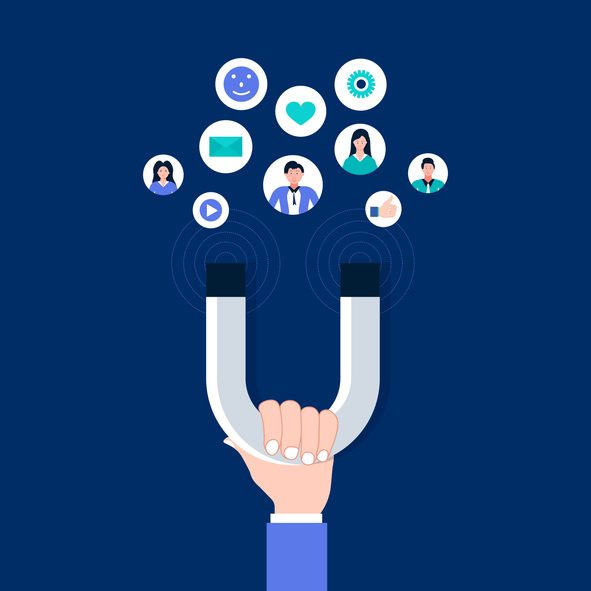
A practical guide to understanding RAG for smarter AI solutions in B2B
While many companies have dabbled in generative AI to create content or assist customers, there’s a growing challenge: accuracy. What if the AI provides convincing but incorrect information? Enter Retrieval Augmented Generation (RAG) — an approach that ensures your AI not only generates useful content but also backs it up with real, verified information.
Imagine having an AI assistant that can answer specific questions about your product catalog, reference documentation, or even customer contracts with unparalleled precision. That’s the promise of RAG, and it’s one your business can’t afford to ignore.
What is Retrieval Augmented Generation (RAG)?
At its core, Retrieval Augmented Generation (RAG) is a hybrid AI system that combines the strengths of two powerful technologies:
- Retrieval: This component acts like a supercharged search engine. It scans connected data sources, such as databases, websites, or internal document repositories, and pulls out the most relevant and up-to-date information.
- Generation: Once the data is retrieved, the AI employs generative models to craft a response in natural, conversational language. This makes the information not only accessible but also user-friendly and actionable.
To understand RAG, think of it as an assistant with exceptional research skills. Imagine asking a question: instead of responding off the cuff (like traditional generative AI often does), the assistant first dives into your company’s knowledge vault, verifies the facts, and then gives you a polished, well-informed answer.
Why is RAG different?
Traditional generative AI systems, like ChatGPT, create responses based on patterns they’ve learned during training. While they are remarkably capable of producing human-like text, they have a critical flaw: they can “hallucinate” or generate content that sounds credible but is completely fabricated. This can be a major issue, especially in B2B contexts where accuracy is critical.
In contrast, RAG is anchored in reality. By augmenting the generation process with retrieval, it ensures that every response is based on verified data. For example:
- Traditional generative AI: “Our platform integrates with over 50 tools.” (May be true or false.)
- RAG system: “Our platform integrates with 54 tools, including Salesforce, HubSpot, and Slack, as noted in our integration guide.” (Accurate and sourced.)
How does RAG enhance trust and usability?
Retrieval Augmented Generation addresses a common pain point for businesses: the need for both accuracy and relevance. It’s not enough for AI to sound convincing; it must be backed by verifiable information. This makes RAG particularly useful for:
- Answering specific, nuanced questions about products or services.
- Handling complex queries that require pulling data from multiple sources.
- Providing transparency by referencing the sources used to generate responses.
By bridging the gap between creativity and accuracy, RAG offers a best-of-both-worlds solution that is poised to redefine how businesses interact with AI.
How does RAG work?
Here’s how RAG operates step by step:
- Input query: A user asks a question, such as “What are the pricing tiers for our SaaS platform?”
- Data retrieval: The AI searches connected databases or documents, pulling the relevant details (e.g., pricing tables).
- Response generation: Using the retrieved data, the AI crafts a user-friendly response, such as “Our SaaS platform offers three pricing tiers: Basic, Pro, and Enterprise.”
By connecting retrieval to generation, RAG reduces inaccuracies and ensures outputs are context-aware.
Why RAG is a game-changer for B2B companies
RAG addresses some of the most significant challenges in AI adoption for businesses, making it an essential tool for companies navigating complex industries:
- Accuracy and trust: By grounding its responses in verified data, RAG eliminates the risk of misleading or fabricated outputs. This is especially critical in B2B contexts, where errors can erode client trust or lead to costly mistakes.
- Efficiency: Traditional methods of retrieving and synthesizing information often involve navigating multiple systems or relying on human expertise, which takes time. RAG streamlines this process, enabling teams to handle complex queries in seconds and freeing up valuable employee bandwidth for higher-order tasks.
- Personalization: Unlike one-size-fits-all solutions, RAG delivers responses tailored to specific queries. This level of customization enhances the user experience, whether for customers seeking support or sales teams crafting proposals for prospective clients.
For B2B companies, where decisions often hinge on precise information, these benefits are invaluable. Whether it’s helping a support team resolve a client’s technical issue or enabling a sales team to respond to a detailed RFP with accurate data, RAG ensures businesses can act quickly and confidently. It also empowers teams to focus on strategic initiatives rather than getting bogged down in repetitive or manual tasks.
In an increasingly competitive market, adopting Retrieval Augmented Generation isn’t just an operational improvement. It’s a way to gain a strategic edge, fostering stronger client relationships and driving long-term growth.
How B2B companies can use RAG effectively
Retrieval Augmented Generation offers a variety of practical applications that can transform the way B2B companies operate, ensuring efficiency, accuracy, and personalization across key business functions:
- Customer support:
AI-powered support bots equipped with RAG can provide precise answers to customer queries by fetching information directly from product manuals, FAQ databases, or troubleshooting guides. For example, instead of giving generic troubleshooting advice, a RAG-enabled bot could deliver a step-by-step solution tailored to a specific product model. This reduces resolution times, enhances customer satisfaction, and allows human support agents to focus on complex or high-priority cases. - Sales enablement:
RAG can be a game-changer for sales teams by automating the creation of tailored responses to RFPs or providing instant access to product specifications during sales pitches. For instance, a sales rep could use a RAG-enabled tool to instantly generate a customized proposal that highlights features most relevant to a prospect’s industry. This not only speeds up the sales process but also demonstrates a deep understanding of the client’s needs. - Internal knowledge management:
Employees often spend significant time searching for policies, training materials, or workflow instructions across various systems. RAG simplifies this by acting as a centralized assistant that retrieves accurate information on demand. Imagine an HR team needing quick access to compliance regulations or onboarding documentation. RAG can fetch this information instantly, improving productivity and reducing frustration. - Content marketing:
Producing high-quality, data-backed content is a major challenge for B2B companies. RAG can assist marketers by pulling up relevant statistics, case studies, or insights from a company’s knowledge base and using this data to generate blog posts, whitepapers, or presentations. For example, a content team could ask a RAG-powered system to draft a blog post on emerging trends in SaaS by incorporating specific company insights and industry reports.
By integrating RAG into these areas, B2B companies can not only improve operational efficiency but also deliver more value to their customers, employees, and stakeholders. The versatility of RAG allows it to adapt to the unique needs of any business, making it a powerful tool for growth and innovation.
Case study: How Lumen Technologies uses RAG for knowledge management
One company leveraging RAG effectively is Lumen Technologies, a global leader in technology services and communications. Lumen implemented RAG to power its internal knowledge management system, enabling employees to access information quickly and accurately.
Here’s how it works:
- Challenge:
Lumen’s team often needed to search through extensive documentation, including technical manuals, product specs, and internal workflows. Traditional search tools were inefficient and time-consuming. - Solution:
By integrating RAG, Lumen created an AI assistant that retrieves specific information from their database and presents it in a concise, conversational format. - Result:
Employees now save significant time when searching for information, improving overall productivity and enabling faster decision-making. The accuracy of retrieved data also reduced errors in customer-facing interactions.
This real-world application highlights the tangible benefits of RAG for businesses handling large volumes of data.
Challenges and considerations for RAG
Despite its potential, adopting RAG comes with several challenges that businesses need to address to maximize its effectiveness:
- Implementation costs:
Setting up a RAG system often requires an upfront investment in infrastructure, integration, and training. Companies must budget for both the technical components — like robust databases and AI models — and the time required to onboard teams. While the long-term ROI can be significant, the initial expense might be a hurdle for smaller organizations. - Data readiness:
RAG is only as good as the data it has access to. Businesses need well-organized, high-quality, and accessible data sources for the system to function effectively. Fragmented or outdated data can lead to poor results, undermining user trust. Companies may need to invest in cleaning, consolidating, and maintaining their data before implementing RAG. - Ethical use:
Ensuring that retrieved data is up-to-date, unbiased, and compliant with privacy regulations is critical. For example, if RAG retrieves sensitive customer data or inaccurate information, it could harm the company’s reputation or even lead to legal issues. Organizations need to implement safeguards, such as regular audits and access controls, to maintain ethical standards. - Scalability and maintenance:
As businesses grow and data sources expand, maintaining the performance of a RAG system can become challenging. Regular updates, retraining models, and optimizing data sources are necessary to ensure continued accuracy and relevance, which can require ongoing investment. - Integration complexity:
For companies with legacy systems or siloed data, integrating RAG into existing workflows can be a complex process. It may require collaboration between IT, operations, and other departments to ensure seamless implementation and minimize disruptions.
While these challenges might seem daunting, they are not insurmountable. By planning carefully, prioritizing data quality, and working with experienced AI partners, businesses can overcome these hurdles and unlock the transformative potential of RAG.
Getting started with RAG
If you’re considering RAG for your business, here’s how to begin:
- Audit your data:
Start by evaluating the current state of your data. Are your databases comprehensive, organized, and accessible? Clean, well-structured data is the foundation of a successful RAG system. This might involve consolidating fragmented data sources, updating outdated information, or implementing systems for ongoing data maintenance. - Define use cases:
Identify the specific areas where RAG can deliver the most value. Start small with targeted tasks like improving customer support responses, automating sales proposals, or enabling internal teams to retrieve policies or training materials. Clear, focused use cases help minimize implementation risks and demonstrate ROI early on. - Partner with experts:
Collaborating with AI providers experienced in RAG solutions can streamline the implementation process. These partners can help you navigate technical complexities, customize the system to your business needs, and provide ongoing support. Look for providers with a proven track record in your industry. - Test and iterate:
Before a full rollout, test your RAG system on a small scale. Gather feedback from users, monitor accuracy and relevance, and refine the system as needed. This iterative approach allows you to address potential issues early and build confidence in the technology. - Plan for scalability:
As your use of RAG expands, consider how the system will scale with your business. Ensure your infrastructure and processes can handle larger datasets, additional use cases, and growing user demands.
Starting with these steps ensures that your business builds a strong foundation for RAG, setting the stage for long-term success and maximum value from your investment.
Conclusion
Retrieval Augmented Generation offers a powerful way for B2B companies to leverage AI while minimizing inaccuracies. By blending retrieval and generation, RAG empowers businesses to provide accurate, meaningful responses, whether for customers, employees, or partners.
At Standard Beagle, we specialize in helping businesses understand and implement cutting-edge AI technologies. Ready to explore how RAG can transform your workflows? Contact us today for a free consultation!











